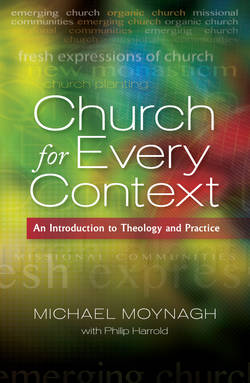Читать книгу Church for Every Context - Michael Moynagh - Страница 33
На сайте Литреса книга снята с продажи.
Keys to effective teamwork
ОглавлениеWe know little about the day-to-day life of Paul’s teams, but from scattered hints we can detect some practices that made his teams effective. First, Paul took great care over selection. In the dispute about John Mark he was willing to break with Barnabas, with whom he had worked for a long time, to find a companion he could trust. Paul preferred to lose a team (and wait for the right one) than to proceed with the wrong team – a lesson perhaps for church founders today.
Second, if trust was a priority, so were forgiveness and reconciliation. Eventually the relationship between Paul and Mark was put right. Paul later described Mark as being helpful to him in his ministry and sent him to Colossae as his representative (2 Tim. 4.11; Col. 4.10). First Corinthians 9.6 may hint at reconciliation with Barnabas as well. Breakdown in relationships – not untypical in teams – was followed by restoration. Paul urged members of his new congregations to be reconciled with each other (for example Rom. 12.16–19) – and he expected the same of himself and his colleagues.
Third, decision-making was shared. If we take a traditional view of its authorship, the instructions in 1 Thessalonians came from Paul, Silas and Timothy together. Dunn quotes Murphy-O’Connor’s calculation that 74 per cent of 2 Corinthians 1—9 is written in the first person plural and only 26 per cent in the first person singular, which suggests that Timothy played an important role in composing these chapters (Dunn, 2009, p. 593, n. 340). Graham Cray notes how often Paul uses ‘we’ or ‘our’ when challenging the Corinthian church (2 Cor. 10.3–6; 12.19; 13.4–9). These challenges must have come after consulting others (Cray, 2010a, p. 15).
Fourth, team members shared their lives. They put their earnings into a common purse. Paul’s theology of sharing spiritual gifts within the body was presumably forged partly from the experiences of his teams. Hints of this are in Acts 16.6–10, where Paul and his companions are kept by the Spirit from preaching the word in Asia and Paul is called to Macedonia through a vision. Paul likely shared this vision with his team, who exercised their spiritual gifts in a process of discernment.
Fifth, Paul encouraged supportive delegation. He sent Timothy, for instance, as his representative to the Corinthian church and later to Ephesus (1 Cor. 4.17; 1 Tim. 1.3), and he encouraged team members to take the initiative (2 Cor. 8.17). At the same time, he ensured his co-workers were properly supported. The ‘pastoral epistles’, assuming they were written by Paul, are brimming with instructions and (in 2 Timothy) encouragement. They were the means of mentoring from a distance, as Timothy and Titus ‘learnt on the job’. Jesus had invested heavily in training his disciples, and Paul was a trainer too.
Finally, Paul’s extended network of associate workers became like a ‘holy internet’, exchanging news, advice, encouragement and, in particular, good practice (Thompson, 1998, p. 59). The Macedonians’ generosity became a prod to the Corinthians (2 Cor. 8.1–7). The Thessalonians’ response to the gospel became a model to all the believers in Macedonia and Achaia (1 Thess. 1.6–7). Paul boasted to other churches about the Thessalonians’ perseverance and faith in the face of persecution (2 Thess. 1.4).
For reflection
Ralph Winter (1973) argued that throughout history the church has contained ‘modalities’, believers gathered as congregations, and ‘sodalities’ that have a specific focus, such as a mission agency or a local men’s club. The Spirit has tended to use sodalities to renew the church and increase its involvement in the world, such as the monastic movement and the Wesley revival.
According to Winter, Paul’s churches were a prototype of subsequent modalities, while his mission teams were prototypes of sodalities. Paul pioneered a modality/sodality structure that has been of enduring importance in the life of the church. Some people are seeing new contextual churches, and some of the networks that are starting to link them together, as forms of sodality for today.
However, would Paul have drawn this distinction? Would he have been happy with a description that focused mission on sodalities, as if modalities (or congregations) did not have mission obligations as well? Did not his evangelizing congregations blur the distinction between modalities and sodalities? Should we use language that drives a wedge between those parts of the church that are missional and those that are not?
